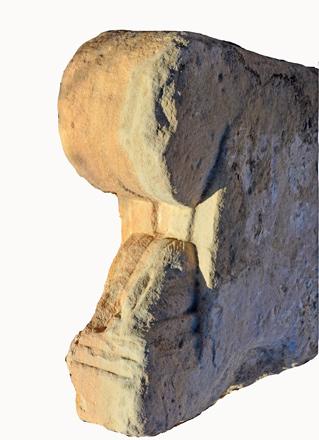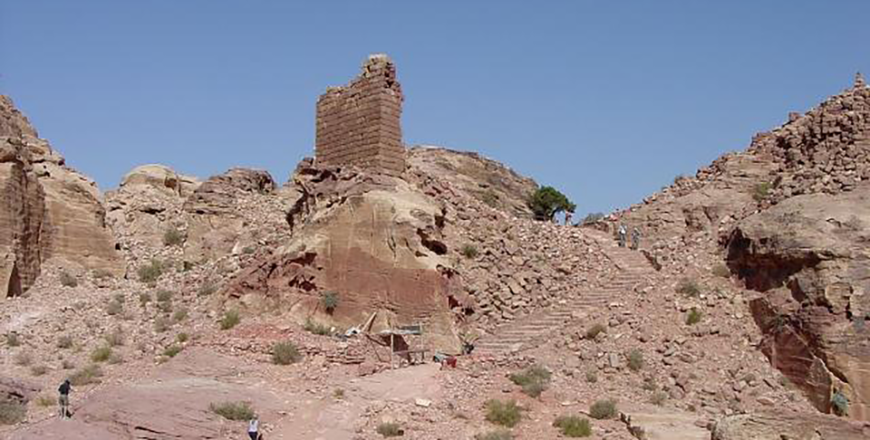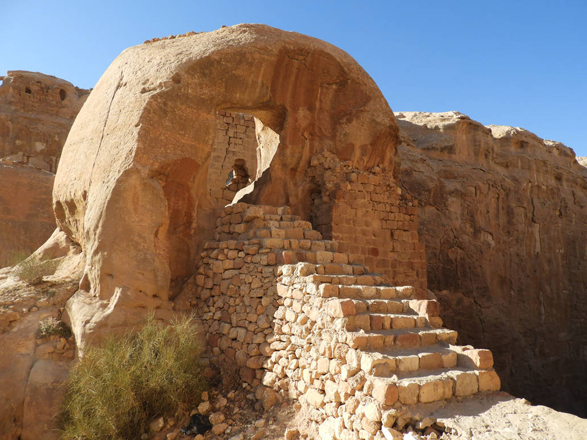You are here
Italian scholar studies impact of crusaders on Petra monastery
By Saeb Rawashdeh - Sep 25,2019 - Last updated at Sep 25,2019

The sandstone sculptured leg of the seat from the chapel found in Al Wu'ayra (Photo courtesy of Vanni-Desideri)
AMMAN — The crusader castle Al Wu'ayra at Petra once was an early mediaeval chapel and even had a “hydraulic cableway” for transporting materials into the monastery in a fast, easy way, noted an Italian archaeologist.
These cableways “reveal that the advanced technical knowledge of antiquity was still applied”, said Andrea Vanni-Desideri, who has worked at the site with his colleague, Silvia Leporatti, since 2016.
Their work has revealed the rock-cut chapel, he said. “The chronology of the early mediaeval chapel is most probably Byzantine [5th-6th centuries AD] and was partially modified during the Crusaders’ occupation,” said Vanni-Desideri, adding that the current archaeological interpretation is that the chapel is a type of monastic settlement typically seen more in the Palestine area.
Even though the building was partially collapsed, the scholars were able to understand its original structure, according to Vanni-Desideri.
The chapel had a triumphal arch crowning two rectangular niches on the north and south side of a narrow and shallow apse, once completely coated with plaster, the archaeologist explained. In addition, a stone-carved passageway connected the chapel with the entrance gate without actually entering the monastery.
The new data collected so far indicates that Crusaders probably settled there not only because of the Christian presence, but also because the building could be easily transformed into a military installation, Vanni-Desideri said, adding that the Crusaders likely only added some buildings (the inner church and the towers) and strengthened the outer defences (the curtain wall with arrow slits).
Furthermore, the research team found the leg of a throne carved into a sandstone slab representing two paws of a goat, probably to be interpreted as a piece of the small church’s furniture, the archaeologist concluded.
Related Articles
AMMAN — During Baldwin I (1100-118), Crusaders built a fortress Al Wu’ayra inside Petra and the stronghold was part of the same network of c
AMMAN — From an archaeological and historical point of view, two features are the most important for the site: its isolation and its long-la
AMMAN — Petra is located in a very arid area of Wadi Musa and its inhabitants had to use all kinds of technical skills to harvest and preser














